
MECHATRONICS
Scope & Guideline
Connecting Disciplines, Shaping the Future of Engineering
Introduction
Aims and Scopes
- Robotics and Automation:
Research in this area includes the design, control, and implementation of robotic systems for various applications, such as rehabilitation, industrial automation, and service robots. - Control Systems:
The journal publishes works on advanced control methodologies, including adaptive control, robust control, and model predictive control, aimed at enhancing the performance of mechatronic systems. - Mechatronic Design and Prototyping:
This includes the development of new mechatronic systems, focusing on innovative designs and prototyping techniques that integrate mechanical, electronic, and software components. - Soft Robotics and Wearable Technologies:
Research in soft robotics focuses on the design and control of flexible robots and wearable devices that can interact safely and effectively with humans. - Sensor Integration and Data Fusion:
The journal emphasizes the integration of various sensing modalities and data fusion techniques to improve the perception and decision-making capabilities of robotic systems. - Human-Robot Interaction (HRI):
This area explores the interaction between humans and robots, including assistive technologies and collaborative robots, focusing on safety, usability, and intuitive control.
Trending and Emerging
- Artificial Intelligence and Machine Learning in Robotics:
There is a marked increase in studies applying AI and machine learning techniques to enhance robotic capabilities, such as learning-based control and perception, indicating a strong trend towards automation and intelligent systems. - Soft Robotics and Bio-Inspired Design:
Research focusing on soft robotics and bio-inspired designs is gaining traction, highlighting the development of flexible and adaptable systems that can operate in unstructured environments. - Collaborative Robotics (Cobots):
The rise of collaborative robots that work alongside humans in shared environments is increasingly prevalent, emphasizing safety, efficiency, and intuitive interaction. - Advanced Sensor Technologies:
Emerging trends include the integration of advanced sensor technologies such as vision systems, tactile sensors, and multi-modal sensing approaches, enhancing the perception capabilities of robotic systems. - Human-Centric Robotics and Rehabilitation,:
Research in human-robot interaction, particularly in rehabilitation and assistive technologies, is on the rise, focusing on improving user experience and outcomes. - Dynamic and Adaptive Control Systems:
There is a growing emphasis on developing control systems that are dynamic and adaptive to changing environments and conditions, reflecting the need for robust performance in real-world applications.
Declining or Waning
- Traditional Mechanical Systems:
Research focused on conventional mechanical systems without integrating advanced technologies has declined, as the field moves towards more intelligent and adaptive systems. - Basic Control Theory:
Papers centered on classical control theory without applications to modern mechatronic systems are appearing less frequently, indicating a shift towards more complex and application-driven control methodologies. - Conventional Sensor Technologies:
The exploration of basic sensor technologies without integration into advanced systems or novel applications is waning, as the field increasingly focuses on innovative sensing strategies and sensor fusion. - Static Systems Modeling:
There is a noticeable decrease in publications focusing on static models and analyses, as the journal emphasizes dynamic and adaptive modeling approaches that reflect real-world complexities. - Low-Impact Robotics:
Topics related to low-impact and non-autonomous robotic solutions are becoming less prominent, as research trends favor high-performance, autonomous, and intelligent robotic systems.
Similar Journals
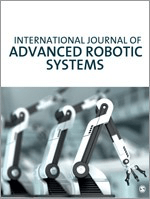
International Journal of Advanced Robotic Systems
Discovering Tomorrow’s Robotics TodayThe International Journal of Advanced Robotic Systems is a premier academic journal, published by SAGE Publications Inc., dedicated to fostering innovation and research in the rapidly evolving field of robotics. With an ISSN of 1729-8814, this Open Access journal has been providing unrestricted access to cutting-edge research since 2004, making it an invaluable resource for researchers, professionals, and students alike. The journal aims to disseminate high-quality, peer-reviewed articles that cover a wide range of topics, including but not limited to robotic systems, automation, artificial intelligence, and sensor technologies. By promoting interdisciplinary collaboration and encouraging novel approaches, the International Journal of Advanced Robotic Systems plays a crucial role in advancing the frontiers of robotics and ensuring its impactful application across various industries. Engaging with this journal not only keeps you at the forefront of the latest developments but also contributes to the global discourse on robotics and its advancements in science and technology.
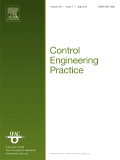
CONTROL ENGINEERING PRACTICE
Unveiling the Future of Applied Mathematics and ControlCONTROL ENGINEERING PRACTICE is a premier journal published by PERGAMON-ELSEVIER SCIENCE LTD that has established itself as a critical platform for the dissemination of cutting-edge research in the fields of Applied Mathematics, Computer Science, Control and Systems Engineering, and Electrical and Electronic Engineering. With an impressive impact factor and classification in the top Q1 quartile across its categories as of 2023, this journal enjoys a rank of #18 out of 635 in Applied Mathematics and is recognized for its robust scholarly contributions, making it an invaluable resource for academics and practitioners alike. Spanning nearly three decades from 1993 to 2024, it aims to bridge theoretical advancements and practical applications, offering readers insights into novel control techniques and system practices. Although it does not currently offer open access, it remains accessible through academic institutions and libraries. Researchers, professionals, and students seeking to keep abreast of the latest developments in control engineering will find this journal an essential companion in their academic and professional journeys.
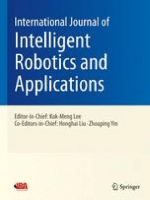
International Journal of Intelligent Robotics and Applications
Pioneering Research in Robotics and AI ApplicationsInternational Journal of Intelligent Robotics and Applications, published by SPRINGER SINGAPORE PTE LTD, is a pivotal platform dedicated to advancing the field of robotics and artificial intelligence. With an ISSN of 2366-5971 and an E-ISSN of 2366-598X, this journal has established its presence since its inception in 2017, showcasing innovative research and applications up until 2024. The journal aims to foster interdisciplinary collaboration by publishing high-quality articles that cover a broad range of topics from foundational AI concepts to cutting-edge robotics technologies. It holds respectable rankings, positioned in the Q3 category of Artificial Intelligence and Q2 category of Computer Science Applications in the 2023 metrics, and is indexed in Scopus with notable rankings in both computer science disciplines. Although it follows a subscription model, the journal remains committed to facilitating access to groundbreaking research for its audience of researchers, professionals, and students, contributing to the ever-evolving landscape of intelligent robotics.
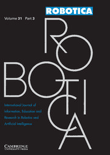
ROBOTICA
Connecting Minds in Robotics and Artificial IntelligenceROBOTICA is a premier academic journal that serves as a vital resource within the multidisciplinary field of robotics and artificial intelligence. Published by Cambridge University Press, this journal boasts a comprehensive scope that encompasses areas such as computational mechanics, computer vision, control systems, and software applications. With an impressive range of quartile rankings in 2023, including Q2 in key categories like Computational Mechanics and Control and Optimization, ROBOTICA represents a significant contribution to its field, providing researchers and practitioners with cutting-edge insights and advancements. Although it follows a traditional subscription model, the journal maintains a commitment to accessibility through its esteemed indexing performance and robust academic standing, evidenced by Scopus rankings within the top percentiles across multiple relevant disciplines. Covering an expansive period from 1983 to 2024, ROBOTICA is essential for anyone looking to stay at the forefront of robotics research and innovation.
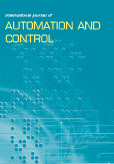
International Journal of Automation and Control
Elevating Standards: Discover the Latest in Automation and Control Technologies.Welcome to the International Journal of Automation and Control, a vital platform for research and discussion in the fields of Control and Systems Engineering, Hardware and Architecture, Industrial and Manufacturing Engineering, and Software. Published by InderScience Enterprises Ltd since 2007, this journal has gained recognition for its high-quality articles and innovative approaches, holding Q3 rankings in its primary fields and a commendable Q2 designation in Industrial and Manufacturing Engineering. While offering a robust mix of theory and practical applications, it aims to bridge the gap between academia and industry, fostering advancements in automation technologies. Researchers, professionals, and students will find invaluable insights and critical analysis that contribute to the evolving landscape of automation and control systems. Although currently not open access, the journal provides a comprehensive archive until 2024, ensuring accessibility to groundbreaking research that shapes the future of engineering. Join a community dedicated to exploring the challenges and achievements in automation and control.
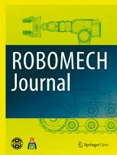
ROBOMECH Journal
Exploring the Future of Robotics with Open Access InsightsROBOMECH Journal, published by SpringerNature, is a prominent open-access journal dedicated to the fields of robotics, mechanical engineering, and artificial intelligence. Established in 2014, the journal has quickly established itself as a vital platform for disseminating innovative research in control and optimization, instrumentation, and modeling and simulation, earning a commendable Q2 ranking in Mechanical Engineering and multiple Q3 rankings across other relevant fields in 2023. With a commitment to facilitating accessible knowledge sharing, ROBOMECH Journal promotes cutting-edge research that drives advancements in both theoretical frameworks and practical applications within the robotics community. Scholars, engineers, and professionals seeking to contribute to or stay informed about the latest developments in these dynamic fields will find the journal's rich array of articles invaluable. With its open-access model, all published research is freely available, ensuring wide dissemination and increased visibility for authors, thus fostering collaboration and innovation across disciplines.
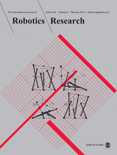
INTERNATIONAL JOURNAL OF ROBOTICS RESEARCH
Shaping Tomorrow's Robotics Landscape TodayINTERNATIONAL JOURNAL OF ROBOTICS RESEARCH (ISSN: 0278-3649, E-ISSN: 1741-3176), published by SAGE PUBLICATIONS LTD, is a leading journal in the fields of robotics and engineering. With an impressive impact factor and recognized as a Q1 journal in various categories including Applied Mathematics, Artificial Intelligence, Electrical and Electronic Engineering, Mechanical Engineering, Modeling and Simulation, and Software, it has established itself as an essential resource for researchers and practitioners alike. The journal covers a wide array of topics relevant to the advancing disciplines of robotics, ensuring comprehensive perspectives on both theoretical and practical applications. Notably, it ranks at the top percentile in Scopus rankings across multiple fields, which underscores its significance in the research community. Published continuously since 1982, the journal invites submissions that push the boundaries of robotics research, offering a platform for innovative ideas and solutions that address complex engineering problems. While it operates under a subscription model, its vast reach and reputation make it an invaluable resource for advancing knowledge in robotics.

ADVANCED ROBOTICS
Connecting Ideas in Robotics and EngineeringADVANCED ROBOTICS is a premier journal published by Taylor & Francis Ltd that has been at the forefront of robotics research since its inception in 1986. With an esteemed ISSN of 0169-1864 and E-ISSN of 1568-5535, this journal offers a unique platform for disseminating high-quality research across diverse domains within the robotics field, encompassing applications in Computer Science, Control and Systems Engineering, Hardware and Architecture. Ranked in the Q2 quartile across multiple categories in 2023, ADVANCED ROBOTICS maintains a reputable standing in the academic community, emphasizing its commitment to advancing knowledge and innovation. Although not an Open Access publication, the journal’s access options ensure that subscribers can explore the latest findings and engage with prominent experts in the field, facilitating an enriching exchange of ideas. Researchers, professionals, and students alike will find ADVANCED ROBOTICS an invaluable resource for keeping abreast of developments and contributing to the ever-evolving landscape of robotics.

JOURNAL OF INTELLIGENT & ROBOTIC SYSTEMS
Empowering Engineering Through Intelligent SolutionsJOURNAL OF INTELLIGENT & ROBOTIC SYSTEMS, published by Springer, is a premier interdisciplinary journal that focuses on the rapidly evolving fields of artificial intelligence, robotics, and their applications across various engineering domains. With an impressive impact factor and ranked in the Q1 and Q2 quartiles of multiple relevant categories—including Electrical and Electronic Engineering, Control and Systems Engineering, and Mechanical Engineering—this journal is essential for researchers, industry professionals, and graduate students seeking to stay at the forefront of innovation in intelligent systems. The journal publishes high-quality research articles, reviews, and technical notes that contribute to advancing theory, practice, and the integration of intelligent robotic systems better suited to meet contemporary challenges. Founded in 1988, and with a robust indexing in Scopus, the journal continues to foster scholarly discourse and serves as a critical resource for those passionate about the future of intelligent technologies, despite not currently providing open access options.
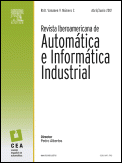
Revista Iberoamericana de Automatica e Informatica Industrial
Bridging Theory and Practice in Industrial InformaticsRevista Iberoamericana de Automatica e Informatica Industrial (ISSN: 1697-7912, E-ISSN: 1697-7920) is a distinguished open-access journal published by UNIV POLITECNICA VALENCIA, EDITORIAL UPV, since its inception in 2007. Based in Valencia, Spain, the journal aims to foster the dissemination of high-quality research in the fields of automation and industrial informatics. With a commendable impact reflected in its 2023 Scopus rankings—Q2 in Computer Science (miscellaneous) and Q3 in Control and Systems Engineering—it serves as a pivotal platform for innovative contributions from both established researchers and emerging scholars. The journal is committed to accessibility, ensuring that all articles are freely available to a global audience, promoting collaborative advancement in technology and engineering. Its coverage spans from 2007 to 2024, making it a valuable resource for those engaged in cutting-edge research and applications in the interdisciplinary landscape of computer science and engineering.